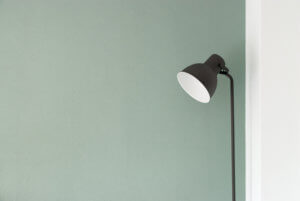
As any seasoned reader of MoldBlogger will by now know, mold is most commonly caused by moisture, humidity and lack of ventilation. It stands to reason, therefore – what with the likes of plumbing leaks and badly insulated pipes – that walls commonly fall prey to this fungal fiend. Not only can this cause health problems but also structural ones, so definitely not something to ignore!
What else do you need to know?
Is it mold?
Some signs to look out for include:
- Cracked or peeling paint
- Discoloration
- Black streaks
- Bulging
- Musty smell
Mold or mildew? Determine this before getting to work, as mildew won’t cause structural damage so may require less aggressive methods.
The material of your walls must also be considered before acting. For example, certain walls, such as drywall, will most likely need to be replaced altogether after being affected by mold.
Read more: Is There Mold In Your Walls
React
- Always wear protective gear when tackling any type of mold – from rubber gloves to safety goggles – and remove as soon as you’re finished to prevent spreading spores throughout your home.
- Ventilate the area before getting to work by opening windows, using a fan – or both!
- Unless your walls are concrete* – DO NOT USE BLEACH as this can contribute further to the problem (not to mention the fact that it can permanently ruin your walls, too.).
- Instead, try more natural methods, such as vinegar, to eliminate the deep root of mold, after using a soap and water spray first to get rid of superficial stains. Avoid using brushes as these can both release and spread the spores instead of containing them.
- No matter what you use, dry the area afterwards with a soft cloth.
- Call in the plumbers if the mold has been caused by leaky or badly insulated pipes.
- Watch out for penetrating damp, which is where cracks or holes in an external wall is compromised, thus leaving a musty smell and cold temperatures indoors.
*Always test bleach on a small patch of wall before tackling it head-on
Prevent
- Specialized products, such as an anti-microbial spray or anti-mildew paint can help prevent spores from re-emerging. Should You Paint Over Mold?
- A dehumidifier in badly affected areas can also work wonders in preventing mold long-term. Aim to keep humidity levels between 30% and 50%, according to cleaning expert at GoCleaners, Andrew Rutherford.
- Invest in insulation. Walls that are properly insulated will be less affected by condensation and, therefore, mold.
- Ventilate ventilate ventilate – especially after a shower and whilst cooking.
- Dry items properly (yes, that means always hanging up towels after use!).
- Check for leaks regularly and tackle immediately – as well as ensuring your roof is not compromised and your gutters are always clear.
- Invest in double glazing.
- Clean, dust and vacuum
- Avoid drying your clothes indoors wherever possible, Andrew advises, as this “increases the humidity in the home” – a “primary cause for mold development”.
Have you been affected by wall mold? Let us know in the comments below!
from Mold Blogger https://moldblogger.com/mold-driving-you-up-the-wall/
Mold Remediation Baltimore
No comments:
Post a Comment